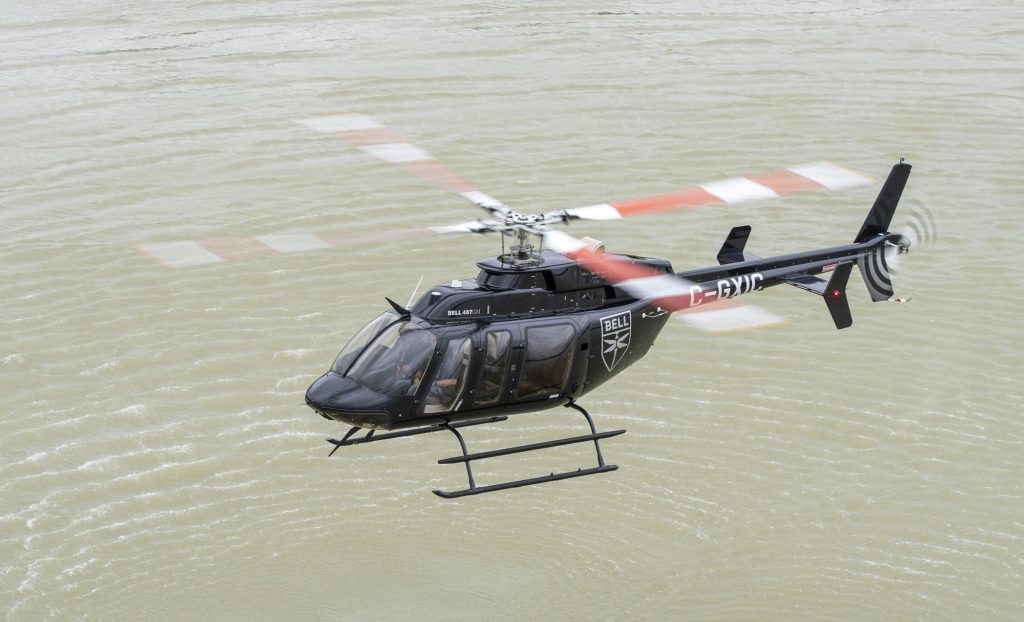
A strong fourth quarter is likely to see Bell finish 2019 with a similar number of commercial deliveries as it had the previous year, with ramped up production of the 407 and 429 helping to balance out a lower rate of 505 Jet Ranger X deliveries.

Advertisement
After having delivered 192 commercial aircraft in 2018, the first nine months of 2019 saw the manufacturer deliver 125 aircraft to commercial customers. And while Bell’s parent company Textron is yet to release its fourth quarter results, Susan Griffin, Bell’s executive vice president of commercial business, said she expected the year’s final tally to be roughly equal to 2018. “I can tell you it’s been an exciting December,” said Griffin, speaking to reporters during a recent media visit to the manufacturer’s Fort Worth, Texas, headquarters.
The 2018 figure included 116 505s, two 206L/LTs, 43 407s, 20 429s, and 11 412s. The first nine months of 2019 has seen 65 505s, two 206L/LTs, 36 407s, 17 429s, and five 412s delivered.
Griffin attributed the drop in 505 deliveries to a stabilization of the market following the aircraft’s launch. “We’re still having a positive response to the 505 — we’re still over 50 percent of the [short light single-engine] market,” she said.
The manufacturer has been ramping up production of the 407 and 429, which will help balance out this year’s delivery numbers. “Since the market came back in 2016, we’ve seen a really strong demand for 407s; if you tried to buy one today, it’s going to be a while before you can get one,” said Griffin. “On the 429, we’ve had really strong support, especially [in terms] of the parapublic demand, and a lot of corporate demand. . . . We’ve got a pretty strong backlog on that one as well.”
Highlights for Bell’s commercial lines in 2019 included the announcement of its sole source selection for the Canadian CH-146 Griffon life extension (the aircraft is based on the Bell 412), instrument flight rules (IFR) certification of the Bell 407GXi, the beginning of customer flights and reaching several certification milestones for the Bell 525 Relentless, and the launch of a new Customer Experience Portal.
The year also saw the delivery of the first of 12 505s to Horizon International Flight Academy — a landmark order for the 505 in its flight training configuration.

Development of the 505 over the year has included high altitude certification (for operations up to 22,500 feet density altitude), continuing work on autopilot systems from Genesys Aerosystems and Garmin autopilot (with certification of both expected in the first quarter of 2020), and the upcoming certification of United Rotorcraft’s medical interior for the type (also expected in the first quarter of 2020).
In terms of the 407, the Garmin NXi (the avionics system in the 407GXi) has now been certified for retrofit, and is available as an upgrade for the roughly 1,000 analog 407s flying around the globe today. While the IFR certification for the 407GXi was gained for the Navy trainer competition, the IFR-configured GXi will be available to commercial customers, too. “We have had a lot of interest on the commercial side [for the upgrade],” said Griffin.
Bell also certified a health and usage monitoring system for the type, and will make the Pulselite lighting system standard equipment for all Bell 407GXi aircraft, starting in 2020.

On the 429, Bell has been looking at what operators need to support their work, said Griffin. This has resulted in the envelope expansion of the aircraft’s center of gravity to support search-and-rescue and parapublic operators, and deep snow shoe certification. Bell will also be launching a new executive interior for the 429 at HAI Heli-Expo 2020 in January.
Bell has begun marketing the latest variant of the Bell 412, the EPX (produced in partnership with Subaru), in North America, with demo flights starting in the U.S. and Canada. The variant was validated by the Japan Civil Aviation Bureau in January 2019, and Bell delivered the first EPX kit for Subaru to start its production on the type in Japan later in the year.
The 525 is moving through flight tests, with customer demonstration flights beginning in 2019. “Next year is just getting through the FAA [Federal Aviation Administration] TIA [type inspection authorization] testing and continuing to work with the future customers [to] get the aircraft out,” said Griffin.
Bell has also been working on a prototype flight data monitoring system and completed testing with it. “It’s a fairly cheap box that we’ll install on all the [commercial Bell] aircraft,” said Griffin. “It will allow us to be able to get all the data off the aircraft to not only better support our information on wanting to understand what all the [fleet] flight hours are, but also be able to provide that information to customers.”

In terms of regional success, Griffin highlighted Bell’s continuing focus on China, with its partnerships with Reignwood on the 505 and Shaanxi Helicopter on the 407 illustrating the potential in the country. “We feel like China is a very important growth market for us,” she said. “This year, we’ve really tried to focus on making sure that we have a service network in the country.”
To that end, Bell announced two new authorized maintenance centers in China, as well as opening up its own supply center in Shanghai.
Griffin said the manufacturer was “working on” an acquisition that would provide it with a part 145 certification so it could perform its own maintenance, repair, and overhaul (MRO) service in China. Bell is also looking for a site to create a hub in the country. “We have put a lot of activity into finding the right location and I think we’re getting close on that,” she said.
Griffin pointed to the range of modifications and programs Bell is working on as evidence that it hasn’t forgotten about its existing product lines, despite the company’s well-publicized work in attempting to develop the vertical lift fleets of the future. “I have seen in some of the surveys . . . the attitude that maybe we’re not investing in our current production programs as we focus on innovation, and I want to make sure [customers] understand that we are focused on upgrading our existing products,” she said.
The company has launched a new Customer Experience Portal to update how customers interact with it, too. The new portal allows customers to perform their own administration of the system, as well as purchase tech publications. In the first quarter of 2020, Bell will launch a replacement for its VISTA system that will allow it to sell parts directly to all Bell owners and operators. The new system will also offer a new spares e-commerce experience.
Finally, Griffin said “2020 is looking good” for Bell from an order book perspective, thanks to strong demand from the market.


